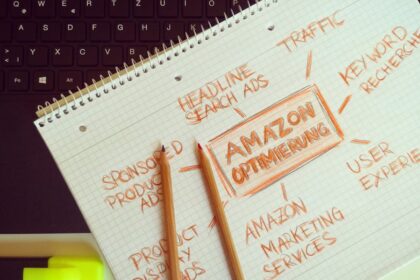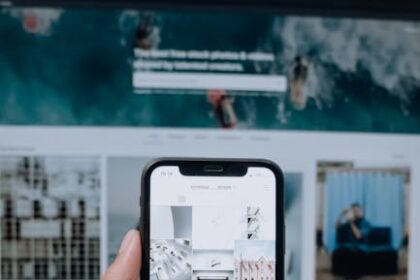Understanding Lookalike Audiences on Instagram is a cornerstone of advanced digital advertising, moving beyond basic demographic or interest-based targeting to leverage the power of artificial intelligence and machine learning. At its core, a lookalike audience is a group of new potential customers who share similar characteristics, behaviors, and attributes with an existing high-value customer base or a highly engaged audience source. Instagram, being a visual-first platform and an integral part of Meta’s advertising ecosystem, benefits immensely from this sophisticated targeting capability. The process initiates by providing Meta’s algorithms with a “seed audience” – a custom audience composed of individuals who have already demonstrated a valuable interaction with a business. This could be anything from website visitors who completed a purchase, loyal customers from a CRM list, or users who engaged deeply with a specific Instagram post. Meta’s system then analyzes hundreds, if not thousands, of data points about these seed individuals, identifying commonalities that might not be immediately apparent to human analysis. These data points can include their interests, demographics, online behaviors, apps they use, pages they like, and even the type of content they interact with across Meta’s vast network.
Once these common attributes are identified, Meta’s algorithm then searches its massive user database to find other individuals who closely match this aggregated profile. The result is a lookalike audience – a highly relevant group of users who are statistically much more likely to be interested in your products or services, or to take a desired action, than a randomly selected audience. The power of this strategy on Instagram is amplified by the platform’s visual nature and high engagement rates. Users on Instagram are often in a discovery mindset, open to new brands and products that resonate with their aesthetic and interests. Lookalike audiences precisely target these users, ensuring that your visually compelling ads are seen by individuals most predisposed to respond. This is fundamentally different from broad targeting, which casts a wide net, or narrow interest targeting, which relies on assumptions about user interests. Lookalikes tap into actual behavioral data, leading to significantly improved ad performance, lower acquisition costs, and higher return on ad spend (ROAS). The sophistication of Meta’s machine learning ensures that these audiences are continually refined, adapting to changing user behaviors and market trends, making them an indispensable tool for scaling campaigns and uncovering truly hidden gems within the vast Instagram user base.
The Foundation: Building High-Quality Seed Audiences
The efficacy of any Instagram lookalike audience hinges entirely on the quality and relevance of its underlying seed audience. A poorly constructed or irrelevant seed audience will inevitably lead to a lookalike audience that performs sub-optimally, wasting ad spend and failing to yield desired results. Therefore, meticulous attention must be paid to the source from which your lookalike audience is generated. The richer and more representative your seed data is of your ideal customer, the more precise and effective your lookalike audience will be.
Customer List (CRM Data): This is often considered the gold standard for seed audiences due to its direct link to actual revenue. Uploading a list of your best customers, especially those with high lifetime value (LTV) or repeat purchases, provides Meta with exceptionally valuable data. This list should ideally include unique identifiers like email addresses, phone numbers, and first/last names. For optimal matching, ensure your data is clean, consistent, and formatted correctly (e.g., all emails lowercase, no extraneous characters). Focus on recent purchasers or customers who have engaged with your brand recently, as their current behaviors are more indicative of new potential customers. Segmenting this list further, for instance, by customers who purchased a specific product line or spent above a certain threshold, can create even more potent lookalikes.
Website Visitors (Pixel Data): The Meta Pixel, installed on your website, is an invaluable source of behavioral data. It tracks user actions such as page views, product views, add-to-carts, initiated checkouts, and completed purchases. To create effective seed audiences from website data, segment your visitors strategically. Instead of a general “all website visitors” audience, which can be too broad, focus on high-intent actions. Audiences like “visitors who added to cart but didn’t purchase,” “visitors who viewed specific high-value product pages,” or critically, “visitors who completed a purchase.” You can also segment by time, for example, “website purchasers in the last 30 days” versus “purchasers in the last 180 days,” to ensure recency and relevance. The more granular the action tracked by the pixel, the more precise your lookalike audience will be.
Engagement Audiences (Instagram & Facebook): These audiences are built directly from user interactions with your organic and paid content on Meta platforms. For Instagram, this includes people who visited your profile, interacted with any of your posts or ads (likes, comments, shares, saves), sent a direct message, or saved any of your posts or ads. Video viewers are particularly powerful; creating a seed audience of users who watched a significant portion (e.g., 75% or 95%) of your video content indicates high engagement and interest. These engagement audiences are incredibly valuable because they represent users who are already familiar with and have shown an affinity for your brand within the Instagram environment, making their lookalikes highly relevant for new user acquisition on the platform.
App Activity: If your business has a mobile application, creating a seed audience from users who have downloaded your app, completed specific in-app purchases, or performed high-value actions (like completing a tutorial, reaching a certain level in a game, or subscribing) can generate highly effective lookalikes for app growth. The Meta SDK (Software Development Kit) must be integrated into your app to track these events accurately.
Offline Activity: For businesses with physical locations, data from point-of-sale systems or in-store interactions can be uploaded to create custom audiences. This includes store visits, in-store purchases, or customers who redeemed an in-store coupon. This bridges the gap between online and offline behavior, allowing you to find new customers who mirror the characteristics of your most loyal physical store clientele.
Video Viewers: As mentioned under engagement audiences, video views warrant special consideration. Users who watch a significant percentage of your video content (e.g., 75% or 95%) are highly engaged and interested in your content, indicating a strong potential for conversion. Creating lookalikes from these engaged video viewers can lead to very strong results, especially for video-centric campaigns on Instagram.
Lead Forms: If you’re running lead generation campaigns, building a seed audience from individuals who have submitted a lead form is crucial. These users have expressed a direct interest in your offering, making their lookalikes ideal for finding new leads.
When selecting a seed audience, always prioritize quality over quantity. While Meta requires a minimum of 100 matching users for a lookalike audience to be created, ideally, your seed audience should contain at least 1,000 highly engaged or valuable users for optimal performance and broader reach. Experimentation with different seed audience types is key to discovering which one yields the most profitable lookalikes for your specific business goals. Regularly updating and refreshing your seed audiences, especially those based on dynamic data like website visitors or recent purchasers, ensures their continued relevance and effectiveness.
Building Lookalike Audiences in Meta Ads Manager
Creating lookalike audiences within Meta Ads Manager is a straightforward process once your seed audiences are established. However, understanding the nuances of each step is critical for maximizing their effectiveness on Instagram.
Step-by-Step Process:
- Navigate to Audiences: From your Meta Business Suite or directly from Ads Manager, click on the “All Tools” menu (usually represented by nine dots or a hamburger icon) and select “Audiences” under the “Advertise” section.
- Create Audience: Click the “Create Audience” dropdown menu and select “Lookalike Audience.”
- Choose Your Source: This is the most crucial step. A pop-up window will prompt you to “Select Your Source.” Here, you’ll choose one of your existing custom audiences that will serve as the seed for your lookalike. This could be a custom audience built from your customer list, website pixel data (e.g., purchasers, add-to-carts), app activity, or engagement audiences (Instagram profile visitors, video viewers, Facebook page engagers). Select the custom audience that best represents your ideal customer or desired action. For Instagram optimization, a seed audience of “Instagram Engagers” or “Website Purchasers” is often highly effective.
- Select Audience Location: Specify the geographic region for your lookalike audience. This is typically the country or countries where your target audience resides. For instance, if your customers are primarily in the United States, select “United States.” You can select multiple countries if your target market is international, but generally, starting with one country per lookalike audience is recommended for better control and analysis.
- Choose Audience Size: This is represented as a percentage range from 1% to 10%.
- 1% Lookalike: This audience is the most similar to your seed audience. It offers the highest degree of similarity and typically yields the best performance in terms of conversion rates and ROAS, but it has the smallest reach. It’s excellent for precision targeting and highly optimized campaigns.
- 2-5% Lookalike: These audiences expand the reach while still maintaining a strong degree of similarity to your seed. They offer a good balance between reach and relevance and are often a sweet spot for scaling campaigns effectively.
- 6-10% Lookalike: These audiences offer the broadest reach, as they are the least similar to your seed audience. While they can provide significant scale, their performance in terms of conversion rates might be lower compared to smaller percentages. They are generally used for brand awareness campaigns or when extensive scaling is required and smaller percentages have been exhausted.
- You can create multiple lookalike audiences from the same seed, each with a different percentage (e.g., one 1% LA, one 1-3% LA, one 3-5% LA) to test and compare their performance.
- Create Audience: Once you’ve made your selections, click “Create Audience.” Meta will then begin processing and populating your lookalike audience. This process can take anywhere from a few minutes to several hours, depending on the size of your seed audience and the complexity of the calculation. You’ll receive a notification once the audience is ready for use.
Important Considerations for Instagram Optimization:
- Source Selection for Instagram: While any high-quality seed can work, for Instagram-specific campaigns, consider prioritizing seed audiences derived from Instagram engagement (e.g., profile visits, post saves, story interactions) or website purchasers who likely came from Instagram. This ensures the lookalike audience is inherently predisposed to the Instagram platform’s environment.
- Exclusion of Source Audience: When using lookalike audiences for new customer acquisition, it’s almost always a best practice to exclude your original seed audience (e.g., existing customers, recent purchasers, website visitors from the last X days) from your lookalike campaign. This prevents showing acquisition ads to people who have already converted or are in a retargeting funnel, avoiding wasted ad spend and potential ad fatigue. For example, if you create a lookalike from website purchasers, exclude that exact “website purchasers” custom audience from your ad set.
- Audience Overlap: Be mindful of creating too many overlapping lookalike audiences, especially if they are derived from very similar seed sources. Significant overlap can lead to inefficient bidding and audience cannibalization. Meta Ads Manager provides an “Audience Overlap” tool (under “Audiences” -> “Actions” -> “Show Audience Overlap”) that helps you identify and manage this.
- Regular Refreshing: Lookalike audiences are dynamic but benefit from refreshed seed data. For custom audiences based on website pixel or engagement, Meta automatically updates them. However, for uploaded customer lists, ensure you periodically re-upload updated lists to maintain recency and accuracy of your seed.
By meticulously following these steps and paying close attention to source selection, audience size, and exclusion strategies, advertisers can build highly effective Instagram lookalike audiences that drive significant growth and improved campaign performance.
Optimizing Instagram Lookalike Performance
Once lookalike audiences are created, the true art and science of digital advertising comes into play: optimization. It’s not enough to simply set up a lookalike campaign; continuous testing, analysis, and refinement are paramount to unlocking their full potential on Instagram.
1. Testing Different Seed Audiences:
The initial lookalike audience is just the beginning. The most effective lookalike strategy involves rigorous A/B testing of different seed sources.
- Example A: Lookalike based on customers with high LTV (Lifetime Value).
- Example B: Lookalike based on website visitors who initiated checkout but didn’t purchase.
- Example C: Lookalike based on individuals who watched 95% of your video ads on Instagram.
- Example D: Lookalike based on users who saved your Instagram posts.
Each seed source targets a slightly different segment of your audience, and therefore, their corresponding lookalikes will exhibit unique behaviors. Run concurrent campaigns or separate ad sets for each lookalike, allocating budget appropriately and comparing key performance indicators (KPIs) like CPA (Cost Per Acquisition), ROAS (Return On Ad Spend), and conversion rate. Identify which seed consistently delivers the best results and scale your efforts there.
2. Testing Different Percentages (1% to 10%):
While a 1% lookalike is often the most precise, it’s also the smallest. To scale, you’ll need to explore larger percentages.
- Run experiments with 1%, 2%, 3%, and even 5% lookalikes. You might find that a 2% or 3% lookalike strikes the perfect balance between audience quality and necessary reach for your budget and goals.
- Consider creating overlapping ranges, e.g., a 1% lookalike, a 1-2% lookalike (excluding the 1%), and a 2-3% lookalike (excluding 1-2%). This allows for granular control and isolated performance analysis.
- The optimal percentage can vary significantly based on your industry, product, and target audience size.
3. Layering with Additional Targeting (Use with Caution):
Generally, one of the strengths of lookalikes is their broadness, allowing Meta’s algorithm to find the most relevant users. However, in specific cases, layering additional targeting can refine performance:
- Demographics: If your product is strictly gender-specific or age-restricted, layering age and gender constraints on a lookalike makes sense. Avoid layering income or parental status unless absolutely necessary, as it can unduly restrict reach.
- Interests: Layering interests on a lookalike audience can sometimes be counterproductive, as it narrows the audience and can interfere with Meta’s algorithm finding unexpected pockets of relevant users. Only layer interests if you have strong data indicating that your best customers also universally share a very specific interest that defines them beyond what the lookalike already captures. For instance, if your product is for professional musicians, layering “music production software” on a purchaser lookalike might work.
- Behaviors: Similar to interests, use sparingly. Over-layering restricts Meta’s optimization capabilities.
4. Geographic Specificity:
If your business operates globally but certain regions perform better, create lookalike audiences specific to those regions. For instance, a lookalike for “US purchasers” will be distinct from a lookalike for “UK purchasers.” This allows for localized messaging and budget allocation.
5. Exclusion Strategies:
This is paramount for efficiency.
- Exclude Existing Customers: Always exclude your current customer list from acquisition campaigns.
- Exclude Recent Purchasers: Prevent showing acquisition ads to users who have recently converted.
- Exclude Website Visitors: If running acquisition, exclude recent website visitors (e.g., last 7 or 30 days) who might be better suited for retargeting campaigns.
- Exclude Non-Converters from Retargeting: Once a lookalike user has clicked your ad but not converted, they should ideally move into a separate retargeting funnel, not remain in the lookalike pool for endless prospecting.
6. Creative Relevance:
The best lookalike audience will underperform with irrelevant creative.
- Align Creative with Seed: If your lookalike is based on video viewers, continue using engaging video content. If it’s based on high-value purchasers, showcase high-value products or testimonials.
- A/B Test Creatives: Continuously test different ad creatives (images, videos, copy, calls-to-action) within your lookalike ad sets. Even the best audience needs compelling creative to convert.
- Dynamic Creative Optimization (DCO): Leverage DCO within your ad sets to automatically test combinations of ad elements (images, videos, text, CTAs) and identify the top performers for your lookalike audience.
7. Bid Strategy and Budget:
- Lowest Cost (Automatic Bidding): Often a good starting point for lookalikes, allowing Meta to find conversions at the lowest possible cost within your budget.
- Bid Cap/Cost Cap: For more control over CPA, consider implementing bid caps or cost caps once you have a clear understanding of your target CPA. This tells Meta the maximum you’re willing to pay per result.
- Budget Allocation: Start with a modest budget for new lookalikes and gradually scale up the budget on top-performing audiences. Avoid drastic budget increases (e.g., more than 20% daily) as it can destabilize the learning phase.
8. Placement Optimization:
While “Automatic Placements” are often recommended for allowing Meta to optimize delivery, for Instagram-focused campaigns, you might want to specifically select Instagram Feeds, Stories, and Reels. Monitor performance across placements. If a particular placement (e.g., Audience Network) is draining budget without conversions, consider excluding it.
9. Campaign Objectives:
Ensure your campaign objective aligns with your lookalike strategy.
- Conversions: Ideal for driving purchases, leads, or specific website actions.
- Traffic: Use if your primary goal is to drive clicks to your website/landing page.
- Lead Generation: Specifically for on-platform lead forms.
- Brand Awareness/Reach: For broader top-of-funnel initiatives, larger lookalike percentages (e.g., 5-10%) can be effective.
10. Attribution Windows:
Understand and select the appropriate attribution window for your campaign (e.g., 7-day click or 1-day view, 1-day click). This impacts how conversions are reported and how Meta optimizes delivery based on reported data. Longer windows attribute more, shorter windows demand more immediate results.
By systematically implementing these optimization techniques, advertisers can refine their Instagram lookalike campaigns, moving from basic targeting to highly sophisticated, data-driven acquisition strategies that consistently deliver superior results.
Advanced Lookalike Strategies for Instagram
Beyond the fundamental setup and basic optimization, several advanced strategies can further unlock the power of Instagram lookalike audiences, enabling more precise targeting, greater scale, and ultimately, higher returns. These techniques require a deeper understanding of your data and Meta’s advertising platform.
1. Value-Based Lookalikes (vLLA):
This is arguably one of the most powerful advanced lookalike strategies. Instead of just creating a seed audience of “all purchasers,” a value-based lookalike leverages the monetary value associated with each purchase. For this to work, your Meta Pixel must be configured to pass the “value” parameter with your purchase events. When you create a custom audience from website purchasers, you’ll have the option to “Optimize for value.” Meta’s algorithm then prioritizes finding users who are not only likely to purchase but also likely to generate a higher purchase value or lifetime value. This strategy shifts the focus from merely acquiring customers to acquiring high-value customers, directly impacting your ROAS. It’s particularly effective for businesses with varying product prices or subscription models.
2. Multi-Layered/Stacked Lookalikes:
This approach involves combining multiple lookalike audiences within a single ad set or layering a lookalike with other targeting.
- Combining Lookalikes: You can include several high-performing lookalike audiences (e.g., a 1% LLA from purchasers and a 1% LLA from high-engagement video viewers) into one ad set. This expands your reach while maintaining high relevance from multiple strong data points. Meta’s algorithm will then optimize delivery across this combined pool.
- Lookalike + Broad Interests (Limited Use): While generally not recommended to layer interests on top of a lookalike, a nuanced approach involves creating a broad interest audience (e.g., “fashion” for a clothing brand) and then layering a small percentage lookalike (e.g., 1-2%) on top of that. The idea here is that the broad interest provides a baseline relevancy, and the lookalike refines it, finding the most likely converters within that broad interest group. This can be useful for very niche products where your seed audience might be small, or for exploring new audience segments.
3. International Lookalikes:
Expanding globally with lookalikes requires a strategic approach.
- Region-Specific Seeds: Ideally, create separate seed audiences for each major country or region you target. A purchaser in the US might have different characteristics than a purchaser in Germany.
- Consolidated Global Seed: If you have limited data for individual countries, you can create a global seed audience (e.g., all worldwide purchasers) and then create separate lookalikes for specific countries from this global seed. This allows Meta to learn from a larger dataset, even if the geographic distribution is broad.
- Language and Cultural Nuance: Remember to adapt your ad creative and copy for each target country, even if the lookalike audience behavior is similar.
4. Lookalikes from Custom Conversions:
Beyond standard pixel events, you can define custom conversions in Meta Ads Manager for specific high-value actions not covered by standard events (e.g., “downloaded a specific whitepaper,” “completed a complex multi-step form,” “reached a specific stage in a game”). Creating a custom audience from users who completed these custom conversions can be incredibly powerful for generating lookalikes for highly niche or specialized goals.
5. Dynamic Creative with Lookalikes:
Dynamic Creative Optimization (DCO) allows you to upload multiple images, videos, headlines, primary texts, and calls-to-action. Meta then automatically generates combinations and delivers the best-performing variations to your audience. When combined with lookalike audiences, DCO ensures that not only are you reaching the right people, but you’re also showing them the most compelling ad variants, maximizing engagement and conversion rates within that specific lookalike segment.
6. Leveraging Lookalikes for Brand Awareness vs. Direct Response:
- Direct Response (Conversions, Leads): Focus on 1-3% lookalikes from high-intent seeds (purchasers, high LTV, lead form submissions). These are your primary drivers for immediate ROI.
- Brand Awareness/Reach: Consider using 5-10% lookalikes, potentially layered with broad interests, from seeds like “video viewers (25% completion)” or “Instagram profile visitors.” These larger, slightly less precise audiences can efficiently expand your brand’s reach to a relevant but broader demographic, filling the top of your marketing funnel.
7. Seasonal Lookalikes:
For businesses with seasonal sales cycles (e.g., Black Friday, Christmas, summer sales), consider creating specific lookalike audiences based on purchasers from previous seasonal events. These users are conditioned to buy during specific periods, and their lookalikes are likely to respond to similar seasonal promotions.
8. Lookalikes for Lead Generation Optimization:
If lead generation is your primary goal, create lookalikes from:
- Users who submitted a specific lead form (your highest quality leads).
- Users who visited your lead page but didn’t convert (indicating interest).
- Customers who started as leads and then converted to sales.
Optimize your lead forms and follow-up sequences in conjunction with these targeted lookalikes for maximum efficiency.
9. Retargeting Lookalike Non-Converters:
This is a sophisticated funnel strategy. You target a lookalike audience with an initial ad. If they click through to your website but don’t convert, they become part of a “website visitor” custom audience. You then retarget these specific lookalike-generated non-converters with different, more persuasive ads (e.g., special offers, testimonials, product benefits) to push them further down the funnel. This transforms a cold lookalike audience into a warm retargeting pool.
These advanced lookalike strategies, when implemented thoughtfully and continuously optimized, can significantly elevate your Instagram advertising performance, allowing you to not only unlock hidden audiences but also convert them into loyal, high-value customers. The key is constant experimentation and a data-driven approach.
Troubleshooting and Common Pitfalls with Instagram Lookalikes
While Instagram lookalike audiences are incredibly powerful, they are not immune to issues. Understanding common pitfalls and knowing how to troubleshoot them is essential for maintaining optimal campaign performance and avoiding wasted ad spend.
1. Audience Too Small / Not Delivering:
- Problem: Your lookalike audience is not spending its budget, or the reach is extremely low. This often happens soon after creation.
- Cause: The most common reason is an insufficient seed audience. Meta requires a minimum of 100 users in your seed custom audience to create a lookalike, but for stable delivery and accurate matching, at least 1,000 to 5,000 unique individuals in the seed are recommended, especially for smaller percentages (1%). If your seed is too small, Meta struggles to find enough similar users. Another cause could be overly restrictive layering (e.g., adding too many interests or demographics) on top of the lookalike, narrowing it too much.
- Solution:
- Increase your seed audience size: Can you gather more data (e.g., extend the lookback window for website visitors from 30 to 90 days, or include more customer segments)?
- Use a broader seed: Instead of “purchasers of Product X,” use “all purchasers.”
- Increase the lookalike percentage: Expand from 1% to 2% or 3% to increase reach.
- Reduce layering: Remove any unnecessary interest or demographic filters.
2. Overlapping Audiences / Cannibalization:
- Problem: You’re running multiple ad sets, perhaps with different lookalike audiences or a lookalike and a broad interest audience, and they are competing against each other, driving up costs (CPM/CPC) and reducing efficiency.
- Cause: Meta’s system prioritizes delivering ads to the cheapest and most relevant audience. If multiple ad sets target the same or highly similar users, they enter a bidding war against themselves.
- Solution:
- Use Meta’s “Audience Overlap” tool in Ads Manager to identify problematic overlaps.
- Consolidate overlapping audiences: If two lookalikes (e.g., 1% from purchasers and 1% from high LTV customers) have significant overlap and similar performance, consider combining them into one ad set.
- Strategic Exclusions: Meticulously exclude audiences from ad sets. For instance, if you have a 1% lookalike campaign and a 1-3% lookalike campaign (excluding the 1%), ensure proper exclusions are set. Always exclude existing customers and recent converters.
- Campaign Budget Optimization (CBO): CBO can help Meta automatically allocate budget to the best-performing ad sets within a campaign, reducing internal competition.
3. Stale Seed Data:
- Problem: Lookalike audience performance declines over time, or the audience feels less relevant.
- Cause: Your seed data is outdated. Customer lists might not include recent buyers, or your definition of “high-value customer” has evolved. Website visitor data from 180 days ago might not reflect current user behavior.
- Solution:
- Regularly refresh customer lists: Re-upload updated CRM data monthly or quarterly.
- Adjust lookback windows: Ensure custom audiences from website/app activity are using appropriate lookback windows (e.g., 30-90 days for recent purchasers, 7-30 days for high-intent visitors).
- Create new lookalikes: Don’t rely on a single lookalike indefinitely. Create new ones from fresher seed data periodically.
4. Incorrect Pixel Setup / Data Integrity Issues:
- Problem: Your lookalike audience is not performing as expected, or you can’t create one from website/app activity.
- Cause: The Meta Pixel is not firing correctly, standard or custom events are not configured properly, or the data being sent to Meta is inaccurate (e.g., incorrect value parameters for value-based lookalikes).
- Solution:
- Use the Meta Pixel Helper Chrome extension to verify pixel firing on your website.
- Check Event Manager: Regularly review your Meta Event Manager for any pixel errors, unverified domains, or data quality issues. Ensure events are being received and processed correctly.
- Verify server-side tracking (Conversions API): If using Conversions API, ensure data streams are healthy and deduplication is working.
5. Ignoring Performance Metrics / Lack of Optimization:
- Problem: You create a lookalike and let it run without monitoring or making adjustments, leading to declining ROAS or rising CPA.
- Cause: Lookalikes are dynamic and require ongoing management. Audience saturation, ad fatigue, or changes in market conditions can affect performance.
- Solution:
- Set up clear KPIs: Monitor key metrics like CPA, ROAS, CTR, and Frequency daily/weekly.
- A/B Test Constantly: Test new creatives, different lookalike percentages, new seed audiences, and different bidding strategies.
- Ad Fatigue Management: Watch your frequency metric. If it consistently climbs above 3-4 for prospecting, it’s time to refresh creatives or expand the audience.
- Iterate: Always be testing and learning. What worked yesterday might not work tomorrow.
6. Ad Fatigue with Lookalikes:
- Problem: Your lookalike campaign initially performs well, but then performance drops, CTR decreases, and CPM/CPC increases.
- Cause: The audience has seen your ads too many times and has become desensitized or annoyed. Lookalike audiences, especially smaller percentages, can become saturated quickly.
- Solution:
- Refresh Creatives: The most impactful solution. Introduce new images, videos, ad copy, and calls-to-action regularly.
- Expand Lookalike Percentage: Move from 1% to 2% or 3% to bring in new users.
- Test New Seed Audiences: Generate new lookalikes from different, less-used seed sources.
- Adjust Frequency Capping (though less common with lookalikes, more with reach campaigns): If using reach objective, limit impressions per user. For conversion campaigns, Meta generally optimizes naturally.
7. Attribution Challenges (iOS 14+ Impact):
- Problem: Discrepancies between reported conversions in Ads Manager and actual sales data, especially after iOS 14.5 updates.
- Cause: Apple’s App Tracking Transparency (ATT) framework limits pixel data collection for iOS users, leading to underreporting in Ads Manager.
- Solution:
- Implement Meta’s Conversions API: This allows for server-side data sharing, providing more reliable attribution data.
- Verify Domain: Ensure your domain is verified in Business Manager.
- Configure Aggregated Event Measurement (AEM): Prioritize your 8 most important conversion events for each verified domain.
- Understand the limitations: Be aware that Ads Manager will likely continue to underreport some conversions, and rely more on your CRM/backend data for the definitive truth.
By proactively addressing these common issues, advertisers can ensure their Instagram lookalike campaigns remain robust, efficient, and highly effective in unlocking and converting hidden audiences.
Measuring and Analyzing Lookalike Performance
Accurate measurement and insightful analysis are indispensable for optimizing Instagram lookalike campaigns. Without a clear understanding of what’s working and what isn’t, advertisers are flying blind, risking inefficient ad spend and missed opportunities. Meta Ads Manager provides a wealth of data, but knowing which metrics matter and how to interpret them is key.
1. Key Performance Indicators (KPIs):
Focus on metrics that align with your campaign objectives.
- For Brand Awareness/Reach:
- CPM (Cost Per Mille/Thousand Impressions): How much you pay for 1,000 ad impressions. Lower is generally better.
- Reach & Impressions: The number of unique users who saw your ad and the total number of times your ad was displayed.
- Frequency: The average number of times a unique user saw your ad. High frequency can indicate ad fatigue.
- For Traffic/Engagement:
- CTR (Click-Through Rate): Percentage of people who clicked your ad after seeing it. Higher CTR indicates more engaging creative and good audience relevance.
- CPC (Cost Per Click): How much you pay for each click. Lower is generally better.
- Landing Page Views: Confirms users are not just clicking but also loading your page.
- For Conversions/Sales/Leads:
- CPA (Cost Per Acquisition/Action): The cost to generate a specific desired action (e.g., purchase, lead, sign-up). This is often the most critical metric for direct response campaigns. It tells you the profitability of your acquisition efforts.
- Conversion Rate: The percentage of clicks or impressions that result in a conversion.
- ROAS (Return On Ad Spend): Total revenue generated divided by total ad spend. This is the ultimate measure of profitability for e-commerce or revenue-generating campaigns. A ROAS of 2x means you generated $2 for every $1 spent.
- Cost Per Lead (CPL): For lead generation campaigns, how much you pay for each new lead.
- Lead Quality: Beyond just quantity, assess the quality of leads generated from lookalike audiences (e.g., through follow-up calls, CRM tagging).
2. A/B Testing Methodologies for Lookalikes:
Scientific testing is crucial for identifying superior lookalike strategies.
- Isolate Variables: Only change one primary variable at a time (e.g., different seed audience, different lookalike percentage, different creative).
- Controlled Experiments: Use Meta’s built-in A/B test feature (under the “Experiments” tab in Ads Manager) for more rigorous comparisons. This helps ensure statistical significance.
- Clear Hypothesis: Before running a test, define what you expect to happen (e.g., “Lookalike from LTV customers will have a 15% lower CPA than Lookalike from all purchasers”).
- Adequate Budget & Time: Allocate enough budget and time for the learning phase to complete and for statistically significant results to emerge. Don’t pull the plug too early.
- Segment by Placement: While automatic placements are often default, analyze performance across Instagram Feeds, Stories, and Reels. Some lookalikes might perform better on one placement over another.
3. Using Ads Manager Reports for Insights:
- Custom Columns: Customize your Ads Manager columns to display your most important KPIs. This allows for quick, at-a-glance performance monitoring.
- Breakdowns: Use the “Breakdowns” feature to segment your data by:
- Time: Day, week, month to identify trends or specific performance spikes.
- Delivery: Age, gender, region, placement to see which demographics or placements within your lookalike are performing best.
- Action: Conversion device, conversion window.
- Export Data: Export your campaign data into a spreadsheet for deeper analysis, trend identification, and cross-referencing with other marketing data (e.g., Google Analytics, CRM).
- Attribution Reporting: Understand the different attribution models available (e.g., 7-day click, 1-day view). While challenging post-iOS 14, this still provides insight into Meta’s contribution to conversions.
4. Cohort Analysis for Long-Term Lookalike Value:
- While Ads Manager gives immediate results, the true value of a lookalike audience might reveal itself over time.
- Track Cohorts: Group customers acquired through a specific lookalike campaign by their acquisition date.
- Monitor LTV: Track the Lifetime Value (LTV) of these cohorts over several months or even a year. You might find that a lookalike audience with a slightly higher initial CPA actually yields a much higher LTV due to better customer quality.
- This long-term perspective can shift your perception of what constitutes a “good” lookalike audience, moving beyond just immediate CPA.
5. Attribution Modeling Considerations:
- Multi-Touch Attribution: Understand that Instagram lookalikes are often a discovery channel, acting as the first touchpoint in a longer customer journey. They might not always get the “last click” attribution but are crucial for initiating the funnel.
- Blended ROAS: Compare your overall business ROAS (total revenue / total marketing spend) as a macro indicator, in addition to platform-specific ROAS. This helps account for the complexities of multi-channel attribution.
By systematically measuring, analyzing, and iterating based on these insights, advertisers can continually refine their Instagram lookalike optimization strategies, ensuring that every dollar spent is working as hard as possible to acquire high-value customers. This data-driven approach transforms lookalike targeting from a simple feature into a sophisticated, scalable growth engine.
Ethical Considerations and Privacy in the Age of iOS 14+
The landscape of digital advertising, particularly concerning audience targeting, has undergone significant shifts due to heightened privacy regulations and platform changes. Unlocking hidden audiences through Instagram lookalikes must now be approached with a keen awareness of ethical considerations, data privacy, and the technical implications of updates like Apple’s iOS 14.5. Adherence to these principles is not just a matter of compliance but also crucial for building consumer trust and ensuring the long-term viability of your advertising efforts.
1. The Impact of iOS 14.5 and Beyond:
- App Tracking Transparency (ATT): Apple’s ATT framework requires app developers (including Instagram and Facebook) to explicitly ask users for permission to track their activity across other apps and websites. A significant portion of iOS users opt out, leading to reduced data signals available for Meta’s advertising platform.
- Aggregated Event Measurement (AEM): In response to ATT, Meta introduced AEM, which aggregates conversion events to protect user privacy. For each verified domain, advertisers can configure up to 8 prioritized conversion events. Data reporting is delayed (up to 72 hours) and aggregated, meaning less granular real-time insights for individual user actions.
- Impact on Lookalikes:
- Seed Audience Quality: The quality and size of pixel-based seed audiences (especially from iOS users) may be reduced, potentially impacting the accuracy and scale of lookalike audiences derived from them. Fewer granular data points mean Meta has less to work with when identifying similarities.
- Attribution Challenges: It becomes harder to precisely attribute conversions back to specific lookalike campaigns, leading to discrepancies between Meta Ads Manager and your internal sales data. This doesn’t mean lookalikes aren’t working, but rather that their effectiveness is harder to measure within Meta’s ecosystem.
- Optimization Limitations: Meta’s algorithm has less real-time data to optimize delivery for conversions within lookalike audiences, potentially leading to slightly higher CPA or less efficient scaling compared to pre-iOS 14 days.
2. Emphasis on First-Party Data:
- In a world with reduced third-party data tracking, first-party data (data collected directly from your customers with their consent) becomes invaluable.
- CRM Data: Lookalikes built from uploaded customer lists (email addresses, phone numbers) are less affected by pixel limitations. Prioritize building robust CRM databases with explicit consent.
- On-Platform Engagement: Lookalikes from Instagram/Facebook engagement (video views, profile visits, post interactions) are also less affected, as this data is collected directly by Meta within its own walled garden. Maximize organic engagement efforts to build these valuable seed audiences.
- Lead Generation Forms: On-platform lead forms are also less impacted, making lookalikes from lead submissions a strong strategy.
3. Transparency with Users:
- Privacy Policy: Ensure your website’s privacy policy is clear, comprehensive, and up-to-date, explaining how you collect, use, and share user data for advertising purposes. Mention the use of tracking technologies like the Meta Pixel and how users can opt-out.
- Cookie Consent Banners: Implement robust cookie consent banners on your website, providing users with clear choices regarding tracking preferences. Respect user choices; if they opt out of tracking, do not track them.
- Ad Preferences: Encourage users to manage their ad preferences on Meta platforms. While this is primarily Meta’s responsibility, aligning with transparent practices builds trust.
4. Compliance with Data Privacy Regulations:
- GDPR (General Data Protection Regulation): For targeting audiences in the European Union, ensure all data collection and processing comply with GDPR principles of consent, data minimization, and user rights (right to access, rectification, erasure).
- CCPA (California Consumer Privacy Act) / CPRA: For California residents, comply with CCPA/CPRA requirements regarding the right to know, delete, and opt-out of the sale of personal information.
- Other Regional Laws: Stay informed about and comply with other evolving data privacy laws in regions where you operate or target users.
- Data Minimization: Only collect the data necessary for your advertising objectives. Avoid collecting excessive or irrelevant personal information.
- Secure Data Handling: Ensure all customer data used for lookalike seed audiences is stored and transmitted securely.
5. Ethical Use of Data:
- Avoid Discrimination: While lookalikes identify similarities, ensure your advertising does not inadvertently discriminate or exclude protected classes (e.g., in housing, employment, credit ads). Meta has specific policies for these categories.
- Respect User Experience: Avoid overly aggressive targeting or high frequency that could lead to ad fatigue and a negative user experience.
- No Sensitive Data Uploads: Never upload sensitive personal data (e.g., health information, political affiliations, religious beliefs) to Meta for custom audiences, even if you could. Adhere to Meta’s advertising policies regarding prohibited content and data.
In the evolving privacy landscape, the ethical and compliant use of Instagram lookalike optimization is not just about avoiding penalties but about fostering a sustainable advertising ecosystem. Prioritizing first-party data, maintaining transparency, adhering to regulations, and focusing on user experience will ensure that your lookalike strategies remain effective and responsible into the future. It requires a shift from simply optimizing for conversions to optimizing for privacy-conscious growth and long-term brand trust.











